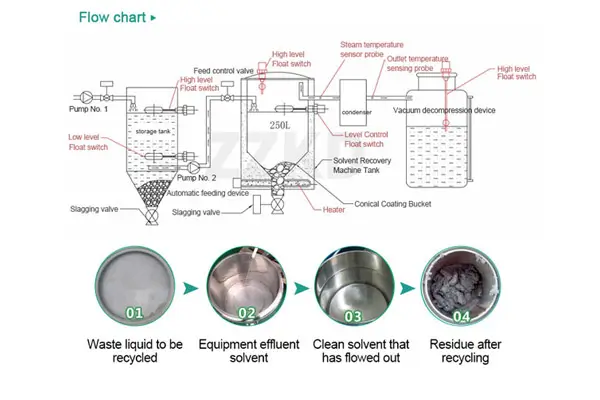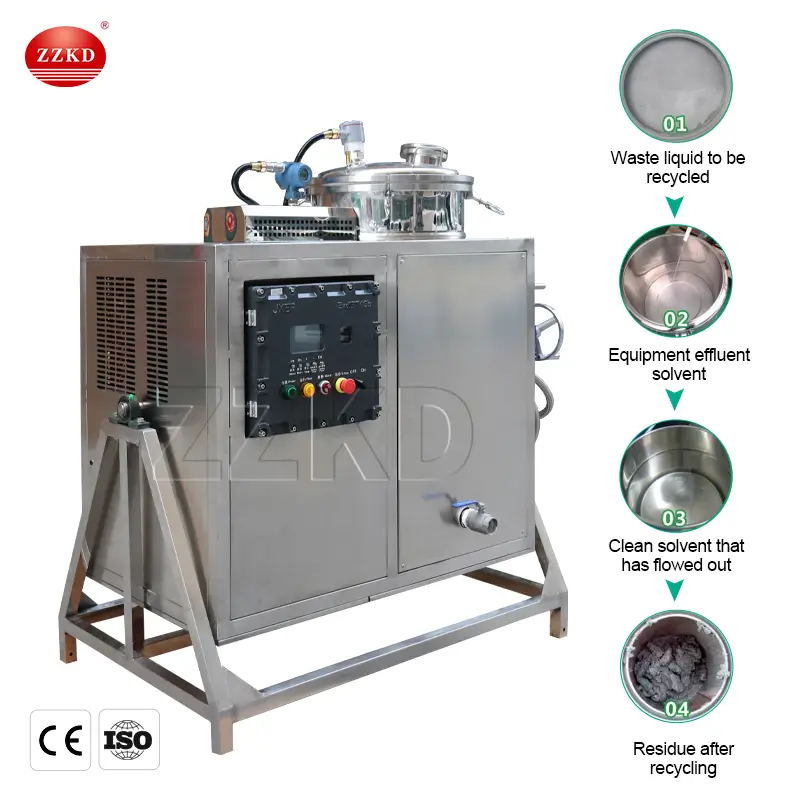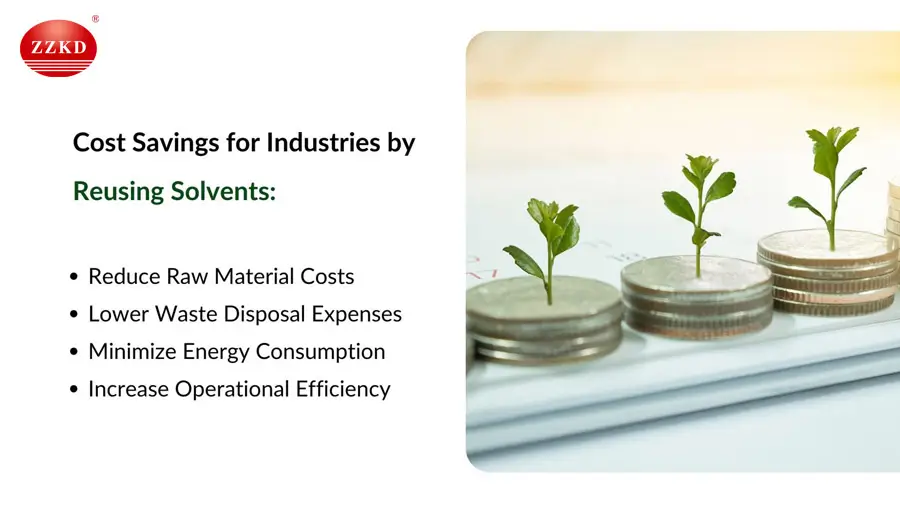Struggling with high solvent costs and environmental waste? Managing chemical processes often involves expensive solvents that get contaminated, leading to disposal issues and constant repurchase expenses.
Solvent recovery is the overall process of capturing and purifying used solvents for reuse, while distillation is a common technique used within that recovery process. Distillation separates liquids based on boiling points, allowing pure solvent vapor to be collected and condensed.

Understanding this difference is key. Think of recovery as the goal – getting back usable solvent – and distillation as one of the main tools to achieve that goal. Many industries rely on this to save money and be more environmentally friendly. Let's explore how this works in more detail.
What exactly is a solvent recovery plant?
Heard the term 'solvent recovery plant' but unsure what it involves? Setting one up might seem like a massive, complicated undertaking for your facility.
A solvent recovery plant isn't necessarily a huge building; it refers to the dedicated equipment or system installed within a facility specifically designed to recover and purify used solvents for reuse.

When we talk about a solvent recovery plant or system, we're referring to the machinery set up to perform the recovery process. The heart of many systems is often a distillation unit, operating on the principles we just discussed. However, the specific equipment chosen depends heavily on several factors. We need to consider the type of solvent – its boiling point and other properties determine if distillation, adsorption, or maybe membrane filtration is best. The volume of solvent waste is also critical.
A large factory might need a continuous distillation unit, while a smaller operation could use a more flexible batch distillation system. We also have to consider safety regulations regarding emissions and waste, ensuring the system complies. Space is another practical point; some units are compact, while others need more dedicated area and ventilation. Think of it as a tailored solution.
For example, our ZZKD solvent recovery machines are designed with safety features like explosion-proof components and sealed systems to prevent leaks. They often include precise temperature controls and automation options for efficiency and safety. Essentially, a 'plant' is the customized setup of recovery equipment integrated into a production facility.
How does the solvent recovery process actually work?
Wondering how dirty, used solvents can become pure enough to use again? It seems complex, turning waste back into a valuable resource within your own facility.
The solvent recovery process typically uses distillation. The waste solvent mixture is heated, causing the solvent to evaporate. This vapor is then cooled (condensed) back into a pure liquid, leaving contaminants behind.

Let me break down the typical solvent recovery journey, often centered around distillation. First, we add the dirty, used solvent mixture into a specialized machine, often called a solvent recovery unit or recycler. The core principle relies on differences in boiling points. We heat the mixture carefully in a controlled system. Since solvents usually have lower boiling points than the contaminants (like paints, oils, or resins), the solvent turns into a vapor first. This clean solvent vapor is then directed away from the waste residue.
The next crucial step is cooling this vapor down using a condenser system. As it cools, the vapor turns back into a high-purity liquid solvent. This recovered solvent is collected, ready to be used again in production, often with cleaning power just as good as new solvent. The leftover contaminants remain in the heating chamber as residue, which can then be safely removed and disposed of, often in much smaller quantities than the original waste solvent volume.
Some systems might involve further purification steps like filtration or other treatments depending on the required purity level. Other recovery methods exist too, like evaporation or liquid-liquid extraction, chosen based on the specific solvents and needs.
Is investing in solvent recovery actually cost-effective?
Concerned about the upfront cost of solvent recovery equipment? It can seem like a big expense, making you question if the savings will truly outweigh the investment.
Yes, solvent recovery is typically very cost-effective. The primary benefit is significantly reducing the need to purchase expensive new solvents, leading to direct cost savings over time.

Let's look at the economics. The biggest draw is definitely the savings from not having to constantly buy virgin solvents. By recycling the solvents you already have, you cut down that purchasing budget considerably. Some systems can achieve very high recovery rates, sometimes up to 96%, meaning you get back almost all of your solvent for reuse.
But it's not just about purchase costs. Disposing of hazardous solvent waste can be expensive and heavily regulated. Recovery drastically reduces the volume of waste, lowering those disposal fees and helping meet environmental regulations. This compliance aspect also helps avoid potential fines. However, it's true that there's an initial investment. Solvent recovery machines can be expensive to buy and install.
There are also ongoing operational costs, including energy consumption and regular maintenance to keep the system running efficiently. When weighing the decision, businesses need to compare these initial and operational costs against the long-term savings from reduced solvent purchases and waste disposal. For many companies, especially those using large volumes of solvents, the payback period is often surprisingly short, making it a financially sound and environmentally responsible investment.
Conclusion
Recovery is reusing solvents, often using distillation. The process involves heating, vaporizing, and condensing. Plants use tailored systems, and while there's an initial cost, recovery saves money long-term.
